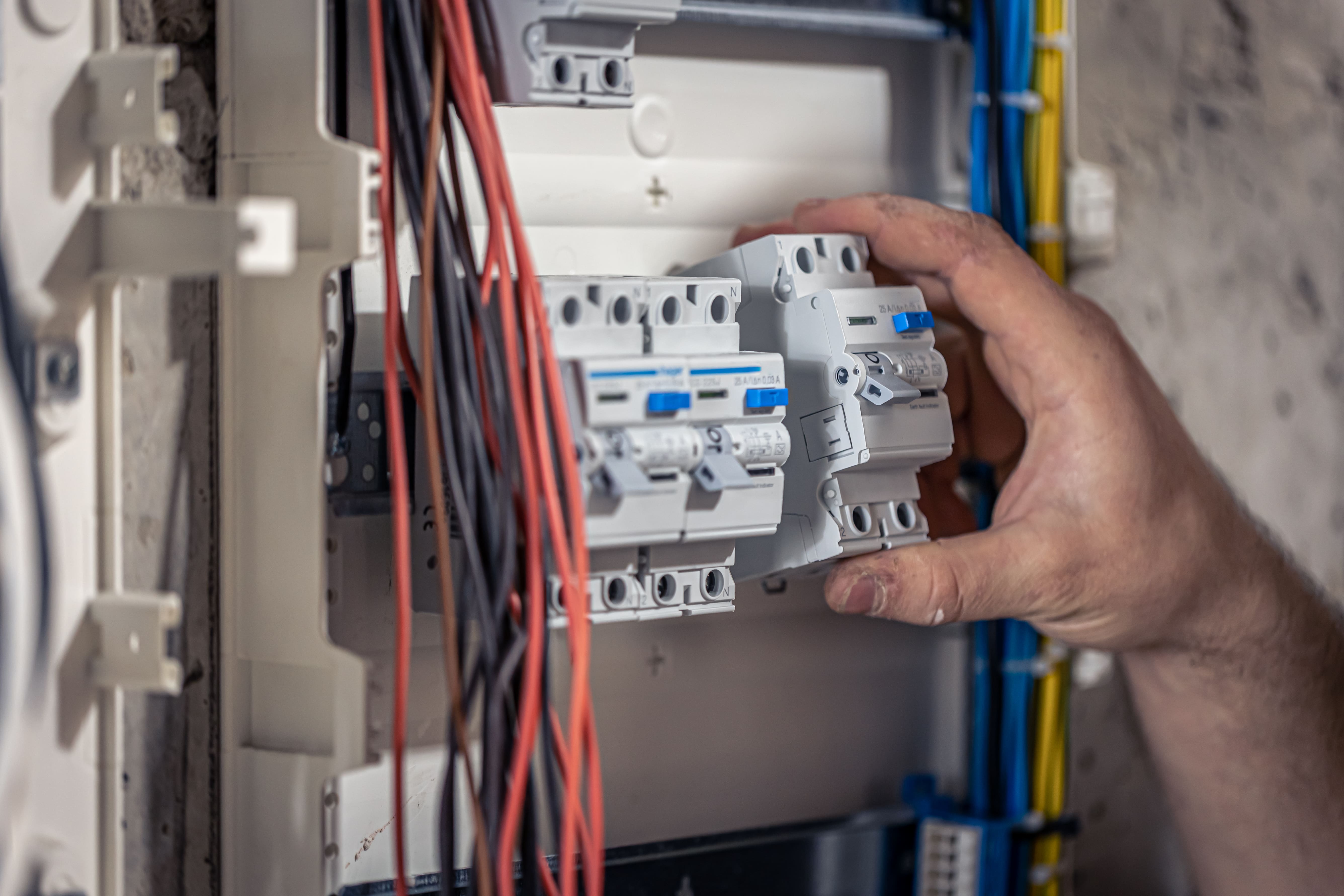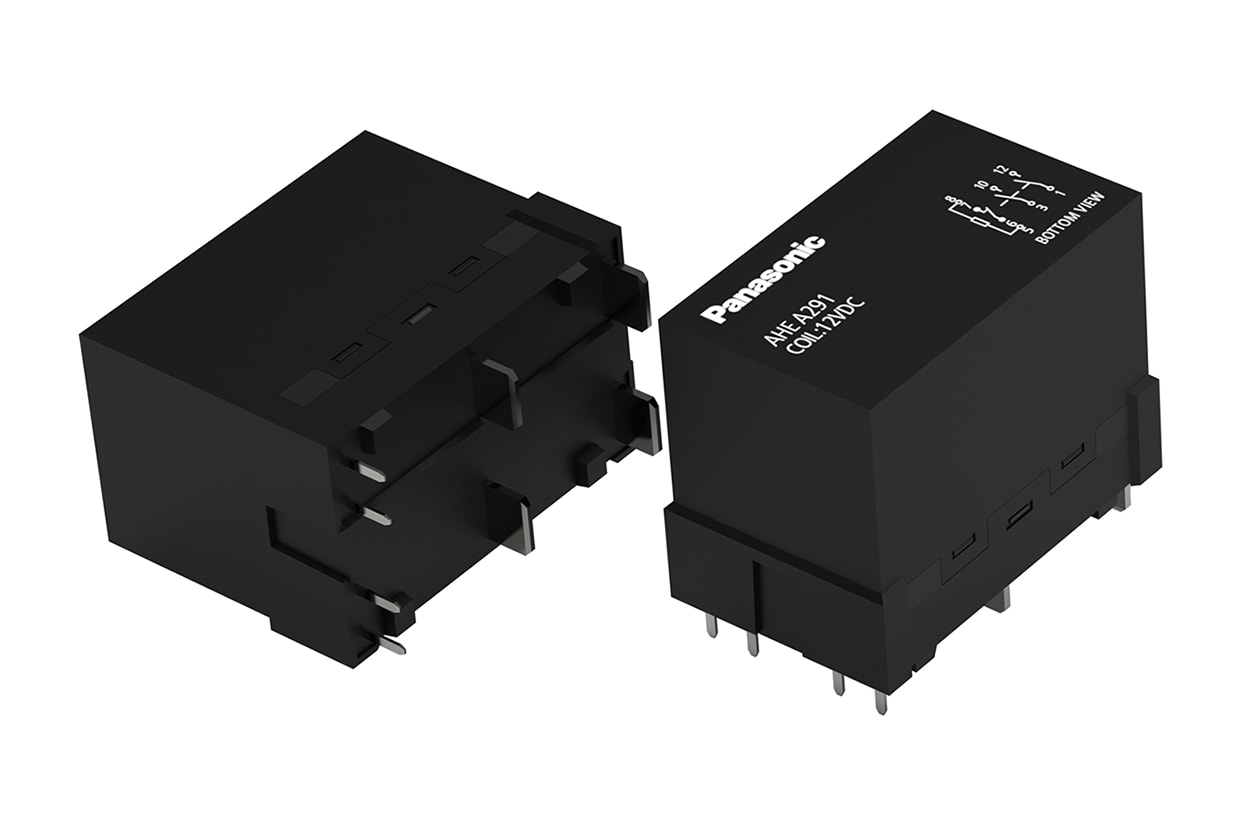- Published 9 Feb 2024
- Last Modified 9 Feb 2024
- 8 min
A Guide to Electrical Relays: Types and Applications
Discover the world of electrical relays and gain insights into distinct types designed for diverse industrial applications.

Discover the world of electrical relays and gain insights into the distinct types designed for a wide variety industrial applications.
In this comprehensive guide we’ll explore the concept, history, and the various types of electrical relays. By the end you’ll be armed with the knowledge necessary to make well-informed decisions when it comes to selecting the right electrical relays for your specific applications.
What are Electrical Relays?
Electrical relays are essential components that are used in a wide variety of industrial and commercial systems. These switches, activated by low-power input signals, effectively control high-power electrical circuits. They are widely used and highly versatile being used in applications ranging from simple things like turning on lighting to more complex applications like ensuring the safety of industrial machinery.

History of Electrical Relays
The history of relays <u>dates back to the early 19th century</u>, when they were used in telegraph systems to amplify signals. As technology evolved over the years, so did the applications for electrical relays, and they are now used in a wide variety of tools and applications. With the discovery of electromagnetism, relays further evolved with the invention of the electromagnetic relay, which offered more reliable and efficient control of electrical circuits. Relays have continued to evolve, most noticeably alongside advancements in solid-state electronics, which have allowed modern relays to provide faster response times and increased reliability. Modern relays now also provide a much wider array of functions, making them essential in industries ranging from automotive to telecommunications.
Electrical Relay Types
Next, we'll explore the different types of electrical relays, their applications, and the industries that they are typically used in.
Force Guided Relays
Force guided relays are essential in situations where safety is critical and failure could lead to serious consequences. They are designed with special mechanically linked switches to ensure reliable performance and prevent all circuits from closing at the same time. This unique feature makes them perfect for situations where redundancy and fail-safe operation are not just beneficial but a must. These electrical relays are often used in industries that are required to follow strict safety rules and government regulations. Thanks to their mechanical design, they provide an extra layer of protection against potential problems and keep things running smoothly, even when unexpected issues arise.
Automotive Relays
Automotive electrical relays, or car relays, are specifically designed for the automotive industry and play an important role in vehicles around the world. Automotive relays help to facilitate control over electronic components in vehicles such as headlights, air conditioning, and windshield wipers. Relays provide a crucial connection by seamlessly linking low power control commands to high power machines, translating digital directives into tangible mechanical responses. They play a key role in safeguarding sensitive circuitry from the strong currents needed for functions like lighting, wipers, and fans. Car relays are built to withstand the demanding conditions of engine compartments, ensuring the seamless operation of critical vehicle systems, leading to enhanced vehicle efficiency and performance. These conditions can include elevated temperatures and mechanical vibrations which can be difficult for electrical components to withstand. However, due to their specific and specialised design car relays are durable enough to resist the stresses typically associated with this environment.
Power Relays
Power relays are capable of handling high currents, they frequently switch power-demanding devices like motors, heaters, and lamps, playing an essential role in an array of industrial processes and commercial applications. In industrial settings, power relays ensure heavy duty machinery operates smoothly and safely such as industrial heaters or large motors. In commercial settings they can be used for everything from maintaining oven temperatures to controlling lighting systems in a shopping mall. These electrical relays enable the seamless operation of equipment that powers our industries and improves our daily lives.
High Frequency Relays and Radio Frequency Relays
High-frequency (HF) relays and radio frequency (RF) relays excel in switching higher-frequency signals, finding their place in applications from telecommunications to radar and high frequency testing equipment. In these kinds of situations, precision in controlling signals can be absolutely essential. As electronic devices use increasingly higher frequencies, HF relays are the go to choice for isolating circuits in such environments. They are used where electronic signals are generated at high frequencies, spanning various domains, including telecommunications, computers, and industrial machinery. In the world of telecommunications, where rapid and flawless signal transmission is vital, HF relays show their true value. They enable efficient signal routing in complex network structures, ensuring minimal signal loss and the best transmission quality. Their ability to swiftly switch between different signal paths with precision is essential for maintaining the integrity of telecommunications networks. RF relays, on the other hand, are specifically tailored for radio applications. Radio frequency relays are frequently employed in testing equipment and radio broadcasting devices, and are indispensable for creating circuit systems that support both signal transmission and reception. Both RF and HF relays are essential for managing the high voltages that often accompany high frequencies. This is a challenge conventional electrical relays cannot handle.

Reed Relays
Reed relays feature a design centred around two hermetically sealed blades controlled by an electromagnetic coil or magnet. The idea for these relays <u>originated in the early 1920s</u>, but they only went into the market during the 1940s in the telecom industry. Their standout features include high speed switching times, the capability to manage low-level signals, and an impressively long lifespan. Consequently, they are often used in applications where minimal signal interference is important. The construction of reed relays is characterised by their airtight, sealed enclosure. This safeguards the blades from external contaminants and environmental factors, increasing relay reliability and performance.
Signal Relays
A signal relay is a specialised type of electrically operated mechanical switch and are often essential components in various industrial applications. Its primary role revolves around the controlled opening and closing of circuits. Signal relays are categorised into two distinct types: non-latching and latching relays. Latching relays, often referred to as impulse relays or bistable relays, operate by cycling between two stable positions through a set and reset control input, providing flexibility in maintaining specific circuit states. Latching relays are also distinct in that they have the ability to maintain their last switching state even after the electrical input has been removed. In contrast, non-latching relays revert to their default position when the electrical input ceases, making them simpler in design and function. Signal relays are often used on <u>printed circuit boards</u> (PCBs) for handling switching tasks. Designed with a focus on handling low currents and voltages, they shine in situations where precision and efficiency are essential. Their operational capacity extends up to 2A switching, making them well suited to tasks that require precise control over current modulation.
Solid State Interface Relays
Solid State Interface Relays, more commonly referred to as Solid State Relays (SSR), are a modern alternative to other relay types with conventional electromechanical contacts. They offer advantages over other relay types including high-speed switching capabilities, extended operational lifespans, and the absence of moving parts that can wear out over time. What truly differentiates solid state relays is their unique build and approach to relay technology. They completely eliminate moving parts, opting for a solid-state solution that leverages the electrical and optical properties of semiconductors. This approach allows them to excel in input-to-output isolation and seamless switching, ensuring reliability and precision in various applications.Solid state relays are often used between control systems and high-power loads. Their versatility, compact form, and cost-effectiveness ensure that they can be found in many industrial applications such as motion control, power distribution, heating systems, and lighting management. As a modern solution, Solid state relays meet the demands of today’s dynamic industrial landscape, providing a more reliable means of control and power management as compared to more conventional relays.
Timer Relays
Time plays a crucial role in many industrial processes. Timer relays are essentially control relays that provide time-delayed switching, useful in applications that require sequential actions or delayed start/stop functions. Timer relays are often used to orchestrate complex sequences with precision.Timer relays are unique in that they blend electromechanical output relays with control circuits, making them an efficient tool for time management. These relays can determine whether contacts should be open or closed before or after a predefined interval. Timer Relays can be incredibly flexible in handling intervals from just a few milliseconds to hours, or even extending to days. Timer relays play a critical role in streamlining processes by introducing measured time intervals between actions. This precision affords industries the capacity to achieve a finely tuned sequence of events, optimising efficiency, safety, and accuracy. The applications of timer relays are widespread, used in industries ranging from manufacturing and automation to energy and lighting.
Monitoring Relays
Monitoring relays provide oversight of electrical systems and are responsible for safeguarding, supervising, and ensuring optimal performance. These specialised relays are used in applications where continuous monitoring, fault detection, and immediate response are essential, such as in industries like power distribution, <u>industrial automation</u>, and facility management. Monitoring relays are designed to constantly observe various electrical parameters, such as voltage, current, frequency, and phase to detect deviations from preset thresholds. They can be instrumental in detecting irregularities like voltage dips, overloads, phase imbalances, and faults before they escalate into critical issues. Common types of monitoring relays include phase failure/phase fault relays, voltage monitoring relays, current monitoring relays, and thermal overload monitoring relays. Each type of monitoring relay is specifically engineered to address particular challenges and provide precise monitoring for the electrical parameter it was designed for.
Summary
Across a wide spectrum of applications, electrical relays help to facilitate crucial tasks in switching and circuit control. From the automotive sector to safety-critical systems, each relay type brings a distinct set of features and advantages, tailored to meet specific requirements.
In the dynamic world of electrical relays, you must equip yourself with the tools you need to ensure not only the efficiency, safety, and reliability of your systems but also the seamless integration of technological advancements. These reliable components not only bridge the gap between the analog and digital worlds but also pave the way for innovation in countless industries.
Remember that choosing the right type of relay for your specific needs can make all the difference in achieving optimal performance and staying at the forefront of technology.
Popular Brands
TE Connectivity
TE Connectivity is a swiss based manufacturer of electrical relays and other components for various industrial applications.
Related links
- Power Relays
- Unveiling the Essentials: A Comprehensive Guide to Isolators
- A Comprehensive Guide to Mallets
- Understanding Thermistors: Types and Calibration in New Zealand
- The Complete Guide to Cutters
- What are Electrical Transformers in New Zealand?
- SATA Cables – A Complete Guide in New Zealand
- A Guide to UPS Systems and Why Eaton is Your Trusted Choice in New Zealand


